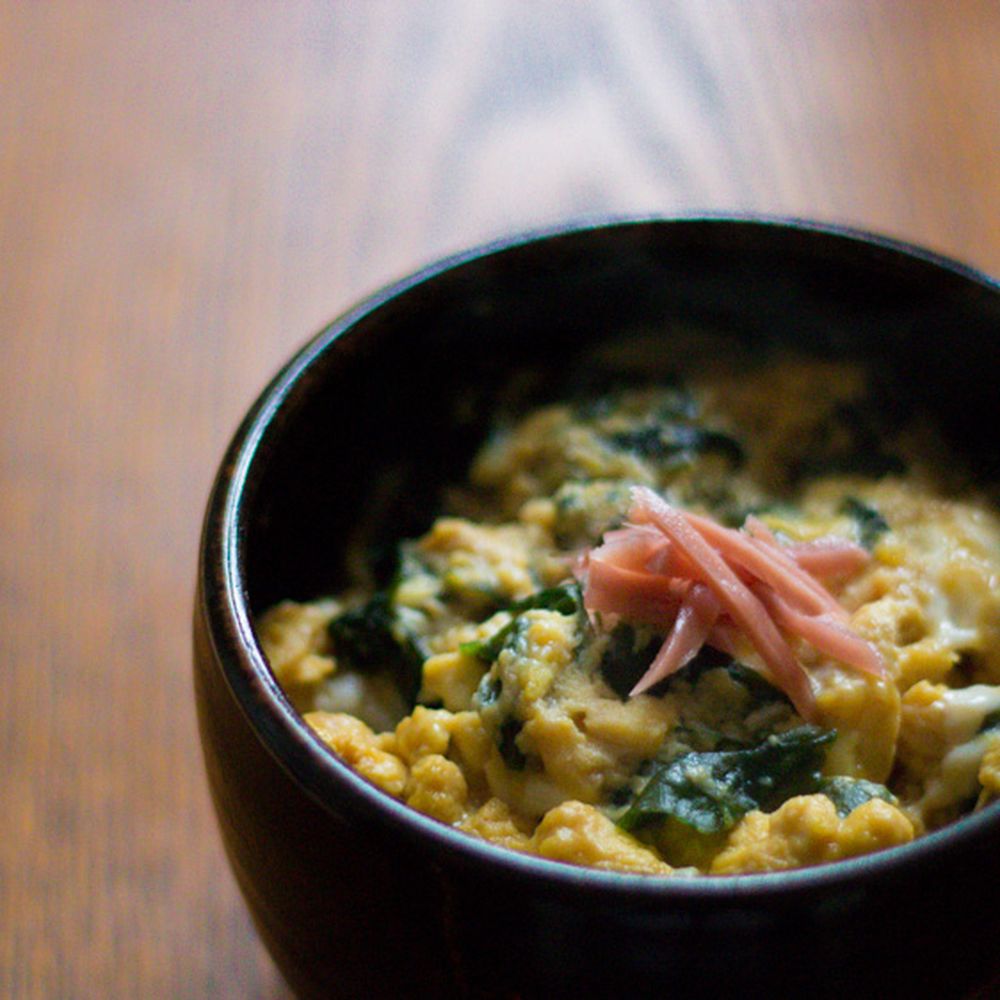Japanese omelette with wakame on rice (wakame tamago-toji donburi)
Japanese cuisine

This is one of the first dishes I learned to make when I began to cook for myself in college. In the newspaper I was subscribing to, there was a short daily column: 'Today's Recipe,' humbly placed near the bottom of the 'Life' section; no photo, just a simple, economical recipe in a paragraph or two. It was one of the first things I would look for when I opened the newspaper in the morning. Sitting on the floor in my studio apartment, I would cut the column with scissors, glue it on an index card, and add to my box of recipe collection.
<br />
<br />I made this egg dish countless times in the tiny apartment kitchen. It takes only a few minutes to make, it's filling, it has a comforting 'sweet and savory' taste, and it's "kind to the purse" (Japanese expression meaning 'low-cost')--ideal to the young and hungry student that was me.
<br />
<br />The technique of pouring beaten eggs to the seasoned broth to make loose omlette/scambled eggs is called "Tamago-toji," or "closing with eggs." It is one of the typical Japanese ways of using eggs.
<br />
<br />The original recipe had more ingredients, such as shirasuboshi (small salted sardines) and katsuobushi (cured skipjack tuna flakes) but over the years, as I lived abroad where I could not find them, the recipe got simplified, and I like it this way now.
<br />
<br />"Donburi" has two meanings: 1. big bowl; 2. a dish of rice with something savory on top, served in the big bowl.
<br />
<br />Wakame is typically used in miso soup, but if you have a bag of wakame sleeping in a cupboard, you might want to try this.

Comments